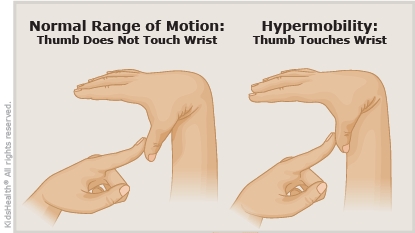Hypermobility Spectrum Disorder: How to Care for Your Child
Children with hypermobility spectrum disorder have very flexible joints. They can have pain and other symptoms. Treatment can help with symptoms so your child can live a healthy, active life.


To help with pain, your child can:
-
Take acetaminophen (Tylenol® or a store brand). Follow the instructions on the label for how much to give and how often. Check with your health care provider before giving your child any other pain medicines.
-
Soak in a hot bath in the morning and before bed.
To prevent pain or stop it from getting worse, your child should:
-
Stop any activities that cause pain.
-
Limit or avoid activities that can injure the joints, such as running, climbing stairs, weightlifting, gymnastics, ballet, and cheerleading.
-
Choose low-impact activities, such as walking, swimming, biking, and tai chi.
-
Do any exercises that their health care provider and physical therapist recommend.
If your child feels anxious, they can:

Your child has:
-
pain that gets worse or that is not eased by acetaminophen
-
daytime tiredness
-
anxiety that affects their everyday activities, like eating, sleeping, and going to school

What causes hypermobility spectrum disorder? Experts don't know the exact cause of hypermobility spectrum disorder. Because it runs in families, a genetic cause is likely.
What are the symptoms of hypermobility spectrum disorder? People with hypermobility spectrum disorder have very flexible joints and usually have pain in their joints, bones, and muscles. For some people, these are the only symptoms. Other people may also have tiredness (fatigue), slow emptying of the stomach after eating, or a drop in blood pressure when moving to a standing position, which can lead to dizziness.